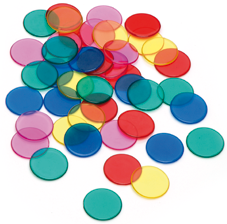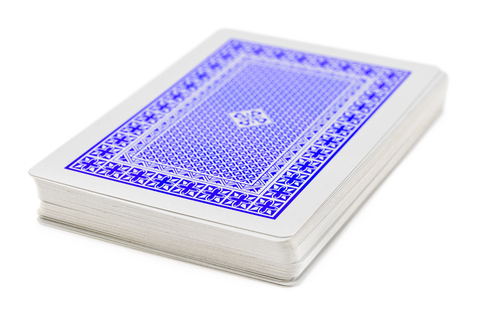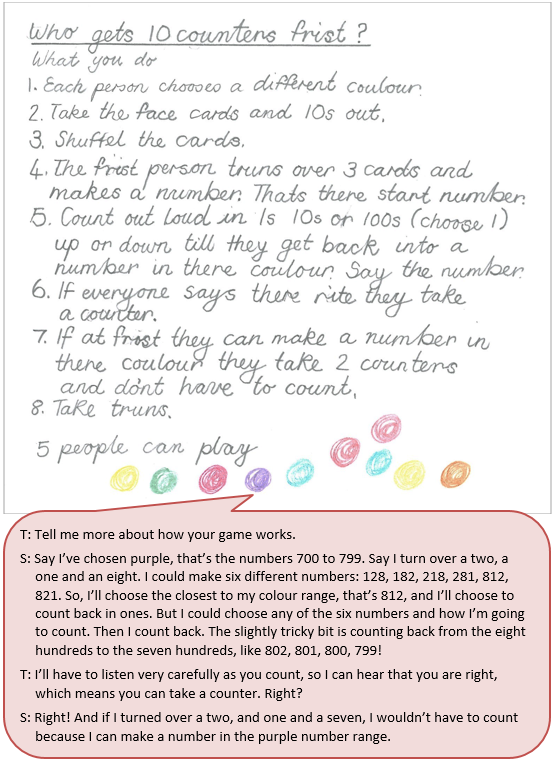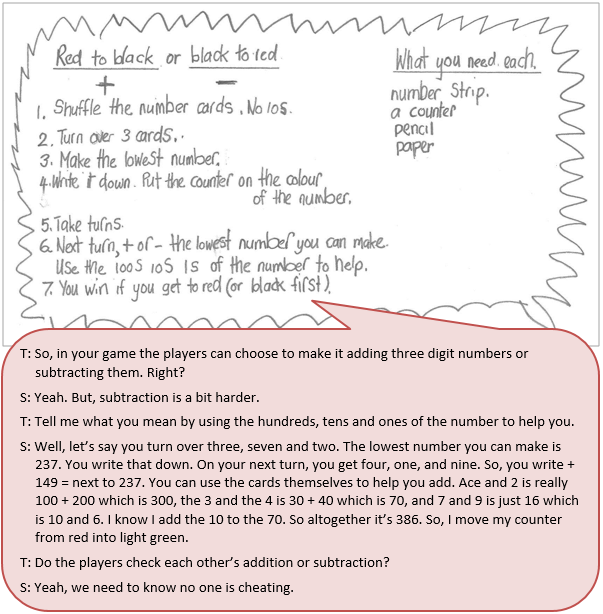The purpose of this activity is to engage students in solving a problem involving numbers to 1000, including applying their knowledge of forward and backward counting sequences.
This activity assumes the students have experience in the following areas:
- Ordering whole numbers to 1000 in sequence.
- Partitioning whole numbers to make calculation easier.
The problem is sufficiently open ended to allow the students freedom of choice in their approach. It may be scaffolded with guidance that leads to a solution, and/or the students might be given the opportunity to solve the problem independently.
The example responses at the end of the resource give an indication of the kind of response to expect from students who approach the problem in particular ways.



The following prompts illustrate how this activity can be structured around the phases of the Mathematics Investigation Cycle.
Make sense
Introduce the problem. Allow students time to read it and discuss in pairs or small groups.
- Do I understand what I need to do?
- Do I know some maths games? What features do maths game have?
- What does my game do? (Players must practise their sequencing of whole numbers up to 1000.)
- What might my game look like? (Ask students to imagine the possibilities for games.)
Plan approach
Discuss ideas about how to solve the problem. Emphasise that, in the planning phase, you want students to say how they would solve the problem, not to actually solve it.
- What materials might be useful for my game? (For example, dice, cards, and counters are potentially useful.)
- What might the playing surface (board) look like?
- How many players will be able to play at a time?
- What rules might I use so players use skill to win rather than just relying on luck?
Take action
Allow students time to work through their strategy and find a solution to the problem.
- Have I shown my game in a clear way?
- Are the rules easy for players to understand?
- Have I got all the materials I need?
- Have I tried my game out first to see that it works?
- How can I modify my game to make it even better?
Convince yourself and others
Allow students time to check their answers and then either have them pair share with other groups or ask for volunteers to share their solution with the class.
- Is my game appealing for players?
- Does my game practise sequencing of numbers to 1000?
- How would I convince someone that my game is worthwhile to play?
- Does the game work well or should I change it? How?
- How could my game be changed to practise other things? (Changes number size and rules are easy ways to create a versatile game?)
- How does my game compare to other maths games? How is it similar and different to other games?
Examples of work
Work sample 1
The student solves the problem for 3 friends and gets Tane’s share of the cards using equations.
Click on the image to enlarge it. Click again to close.
Work sample 2
The student uses tally marks to diagrammatically work out the equal shares for the 3 friends scenario.

